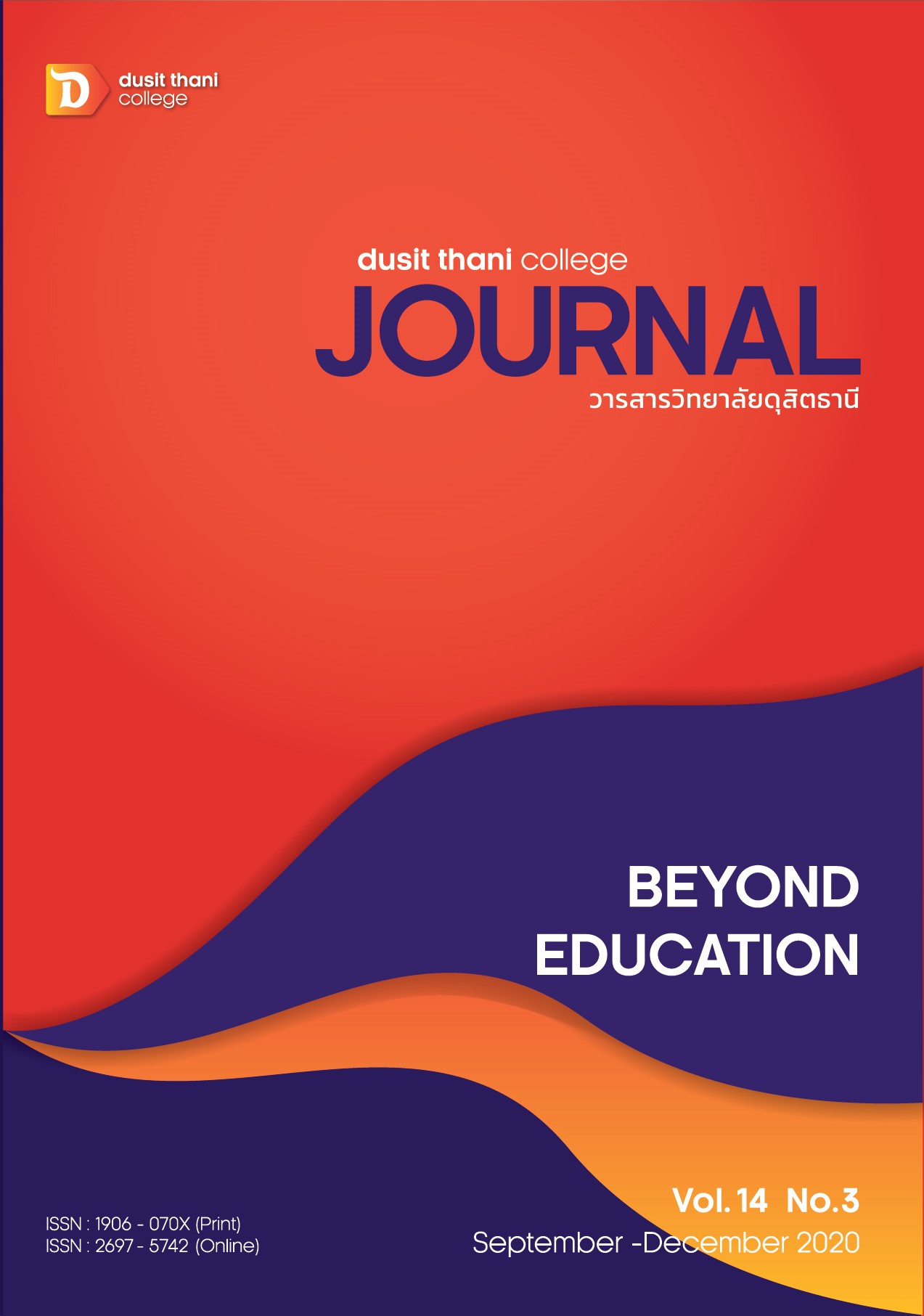Development of a Community-Learning-Center Management System for Local Administrative Organizations in Samut Prakan Province
Main Article Content
Abstract
This study aimed to propose the development of a community-learning-center-management system for local administrative organizations in Samut Prakan province. This research focused on R & D. The research sample was 19 staff members at a community learning center who provided information on current conditions where they work and regarding the need for such a management system. The focus-group technique was employed by nine specialists in supervisory-system management. Five qualified raters also examined and approved the development of a community-learning-center-management system for local administrative organizations. The research tool used for data collection was document analysis. Data collection using the focus-group technique and evaluation were qualitatively verified by using inferential analysis. Quantitative data were presented in terms of frequency, percentage, mean, and standard deviation.
The study results indicate that 1) A community learning-center-management system for local administrative organizations in Samut Prakan province consists of input factors including content, knowledge, service, personnel, budget, premises, materials, equipment, media, technology, cooperative networks, and factors / support. This is a process-management system with CLCM-APOSCARE. It involved: (1) A-Analysis (2) P-Planning (3) O-Organizing (4) S-Staffing (5) C-Coordinating (6) A-Allocating (7) R-Reporting and (8) E-Evaluating elements. The results also revealed that 2) The experts supported the conclusion that a community-learning-center management system will give the operations a high level of suitability. Such a system will offer very useful strategies to be used in administrative operations in the province.
Article Details
Article Screening Policy
- All research and academic articles to be published must be considered and screened by three peer reviews in the relevant field / article.
- All articles, texts, illustrations and tables published in the journal are the personal opinions of the authors. Editors don't always have to agree. And no responsibility whatsoever is the sole responsibility of the author.
- The articles to be published must never be published. Where did you first publish? And not in the consideration of other journals If the audit found that there has been a duplicate publication It is the sole responsibility of the author.
- Any article that the reader sees as being plagiarized or impersonated without reference. Or mislead the work of the author Please let the journal editor know it will be your greatest blessing.
References
Education Innovation. (Unpublished manuscript).
Cohen. J. M., & Uphoff, N. T. (1980). Participation’s place in rural development:
Seeking Clarity through specificity. Worle Development, 8(3), 213 – 235.
Department of Local Administration. (n.d.). Standard of Community Learning Centers.
Retrived April 2, 2017, from http://www.dla.go.th/e_book/eb1/stan17/p0_1.pdf
Panya Janthakot. (2014). Development of Learning Centre Model for Thailand.
Doctor of Philosophy Thesis in Information Studies, Graduate School,
KhonKaen University.
Pasu Decharin. (2002). From Strategy to Action with Balanced Scorecard and
Key Performance Indicators. Bangkok: Chulalongkorn University.
Pongprasert Hoksuwan. (2013). Organizational Performance Report for Educational
Technology and Communication. Nonthaburi: Sukhothai Thammathirat Open
University.
Sumalee Sungsri. (2003). Direction for Providing Nonformal Education for
Life-Long Education. Bangkok: Office of the Non-Formal and Informal Education.
Thaneth Sirikit. (2011). A Collaboration Network and Effective Communication.
Bangkok: Department of Local Administration.
Tipkesorn Boonumpai. (2013). Resources Management for Educational Technology and
Communication. Nonthaburi: Sukhothai Thammathirat Open University.


